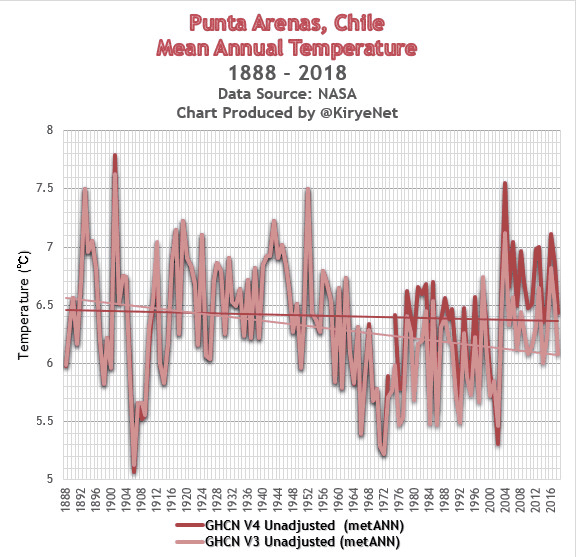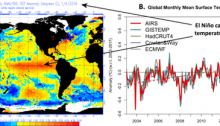- Joined
- Jan 28, 2013
- Messages
- 94,823
- Reaction score
- 28,342
- Location
- Williamsburg, Virginia
- Gender
- Male
- Political Leaning
- Independent
It seems NASA's Gavin Schmidt has fallen prey to the temptation to present his climate advocacy as climate science.

Does NASA’s Latest Study Confirm Global Warming?
Some heated claims were made in a recently published scientific paper, “Recent Global Warming as Confirmed by AIRS,” authored by Susskind et al. One of the co-authors is NASA’s Dr. Gavin Schmidt, keeper of the world’s most widely used dataset on global warming: NASA GISTEMP Press coverage for the paper was strong. ScienceDaily said that the study “verified global…
Continue reading →
[FONT="]". . . A breakdown of several climate datasets, appearing below in degrees centigrade per decade, indicates there are significant discrepancies in estimated climate trends:[/FONT]
[FONT="]Critics of NASA’s GISTEMP have long said its higher temperature trend is due to scientists applying their own “special sauce” at the NASA Goddard Institute for Space Studies (GISS), where Schmidt is head of the climate division. But what is even more suspect is the fact that while this is the first time Schmidt has dared to compare his overheated GISTEMP dataset to a satellite dataset, he chose the AIRS data, which has only 15 years’ worth of data, whereas RSS and UAH have 30 years of data. Furthermore, Schmidt’s use of a 15-year dataset conflicts with the standard practices of the World Meteorological Organization, which states “as the statistical description in terms of the mean and variability of relevant quantities over a period of time… The classical period is 30 years…”[/FONT]
[FONT="]Why would Schmidt, who bills himself as a professional climatologist, break with the standard 30-year period? It appears he did it because he knew he could get an answer he liked, one that’s close to his own dataset, thus “confirming” it. . . . "[/FONT]

Does NASA’s Latest Study Confirm Global Warming?
Some heated claims were made in a recently published scientific paper, “Recent Global Warming as Confirmed by AIRS,” authored by Susskind et al. One of the co-authors is NASA’s Dr. Gavin Schmidt, keeper of the world’s most widely used dataset on global warming: NASA GISTEMP Press coverage for the paper was strong. ScienceDaily said that the study “verified global…
Continue reading →
[FONT="]". . . A breakdown of several climate datasets, appearing below in degrees centigrade per decade, indicates there are significant discrepancies in estimated climate trends:[/FONT]
- AIRS: +0.24 (from the 2019 Susskind et al. study)
- GISTEMP: +0.22
- ECMWF: +0.20
- RSS LT: +0.20
- Cowtan & Way: +0.19
- UAH LT: +0.18
- HadCRUT4: +0.17
[FONT="]Critics of NASA’s GISTEMP have long said its higher temperature trend is due to scientists applying their own “special sauce” at the NASA Goddard Institute for Space Studies (GISS), where Schmidt is head of the climate division. But what is even more suspect is the fact that while this is the first time Schmidt has dared to compare his overheated GISTEMP dataset to a satellite dataset, he chose the AIRS data, which has only 15 years’ worth of data, whereas RSS and UAH have 30 years of data. Furthermore, Schmidt’s use of a 15-year dataset conflicts with the standard practices of the World Meteorological Organization, which states “as the statistical description in terms of the mean and variability of relevant quantities over a period of time… The classical period is 30 years…”[/FONT]
[FONT="]Why would Schmidt, who bills himself as a professional climatologist, break with the standard 30-year period? It appears he did it because he knew he could get an answer he liked, one that’s close to his own dataset, thus “confirming” it. . . . "[/FONT]





